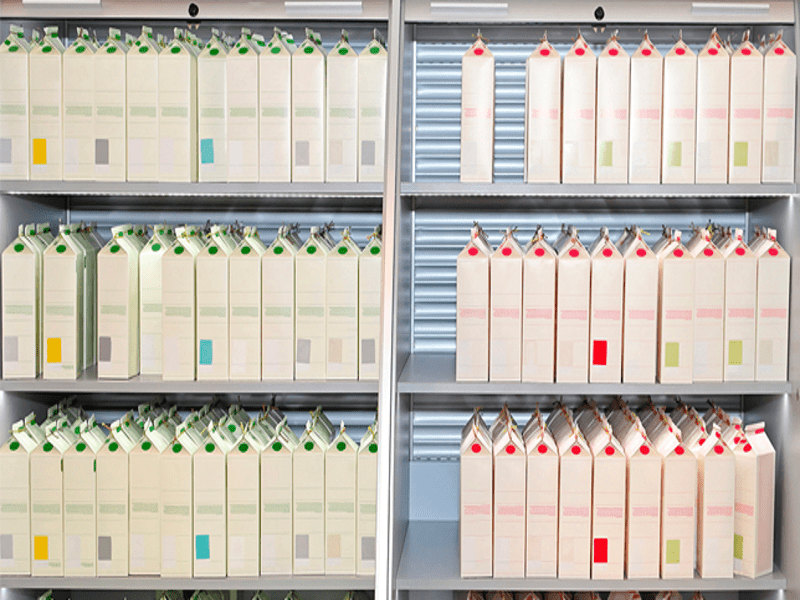Market Report
Sustainable Barrier Coatings in Paper and Board to 2023

The latest research from Smithers has identified the leading coating technologies that will help transform the packaging and food service sectors across the next five years.
Based on an extensive expert survey of the global paperboard industry the Sustainable Barrier Coatings in Paper and Board to 2023 - a State-of-the-art Report tracks the disruptive potential of the top 20 market innovations.
These will cooperate – and compete – to meet the increasing brand owner, consumer and regulatory demands for more sustainable paperboard formats. This is creating new market opportunities to displace existing plastic formats and coatings, and minimise the carbon foot print for packaging.
In surveying industry experts from all stages of the value chain for paperboard, respondents to the Smithers study provided the following insights:
For the packaging industry and coatings suppliers, wider adoption of sustainable barrier technologies, displacing incumbent petroleum-based types, has the potential to disrupt the entire value chain across the next 5 years.
Leading technologies
Sustainable coatings that are direct ‘drop-in’ alternatives to traditional petroleum-based barrier coatings, such as producers of polypropylene and polyethylene, will see the most rapid adoption. The most important sustainable barrier platforms technologies identified by Smithers’ study are:
Polyvinyl alcohol (PVOH) and ethyl vinyl alcohol (EVOH) already have an established position in the global paperboard coatings market, with combined production reaching 28,900 tonnes in 2018 and a value of $173 million.
These aqueous polymeric solutions will continue to see strong demand as a barrier coating in many applications, with volume consumption now growing at 5.4% year-on-year. They provide very strong oxygen barrier performance and resistance to oil and grease meaning demand is especially strong in food and beverage packaging applications. Use in multilayer barrier boards will continue, and as thickeners in formulated coatings containing emulsions.
The main weakness of PVOH/EVOH is their weak resistance to water. Improving this quality, via the improvement of cross-linking as well as oil and grease are priorities for a greener the industry moving forward. Another area of focus is the development of blends from bio-based ethanol.
Other aqueous coatings can be formulated from a broad range of resin-based dispersions and polymer emulsions. These aqueous polymeric dispersions are applied to the surface of paper or paperboard to form a solid, non-porous film after drying. Dispersion polymers are used in paper and paperboard products that are used in foodservice applications, including cupstocks.
As water-based coatings these dispersions are safe and easy to handle. From a sustainability perspective they are recyclable and can undergo industrial composting or repulping, without contaminating the fibre stock.
These are efficient to use on existing in-line coating machines, and there is potential for improved performance via the use of multi-layer slot and slide coating equipment.
To meet the increasing need for more sustainable product solutions, the extrusion polymer market is transitioning from polyethylene and PET towards more sustainable biopolymers and hybrids or blends that degrade more quickly. Biopolymers have the advantage that they are formulated from renewable biological feedstocks rather than petroleum.
The first generation of biopolymers have been derived from crops like sugar cane. Now R&D is increasingly making it plausible to make these from agricultural waste, like corn stalks, or plants grown on marginal land that does not take over prime farming land required for feeding the world’s rising population.
Bio-based plastic barrier technologies have formidable advantages as they can be directly applied, with minor modification, in existing extruder lines to produce sustainable multilayer barrier board structures. Improvements in aqueous coating technologies – especially the introduction of new coating methods, such as curtain and slide coaters – is enabling efficient on-line application of these bio-based blends and dispersions.
PLA
The biopolymer that has seen the most research is polylactic acid (PLA), and by 2023 Smithers analysis shows this will be the material that makes the greatest contribution to a sustainable future for paperboard packaging.
PLA has high tensile strength and is suitable for food contact. It was first produced by Cargill in the US, and Shimadzu in Japan, at the beginning of the 2000s. Today, there are 27 PLA-producing companies with 32 worldwide locations. These include both start-ups, but are also increasingly featuring in the product portfolios of major chemicals and plastics, including
As commercialisation continues capacity will be added and prices will lower making this a more cost-effective solution for paperboard converters. The main technical challenge for PLA is its heat performance. It undergoes thermal degradation above its melting temperatures and consequently has poor melt flow stability during processing, leading to defects such as neck-in.
Furthermore it is thermally unstable and degrades during processing due to hydrolysis and chain scission. Therefore, to run in existing extruders, temperature settings need to be lowered. This makes it time-consuming to switch over from low-density polyethylene, temperatures can differ by as much as 100°C. In the state of the art improving the polymer purity, has shown new high-heat PLA resins can withstand temperatures of up to 140°C
Other bio-based plastics
In the interim versions of existing polymers that are part or wholly bio-based – such as bio-PET – will gain some market share. These do suffer from the disadvantages of not being biodegradable, but represent a drop-in replacement today that can run on existing coating and conversion equipment.
As the market evolves new biopolymer formulations will become available, such as:
The Smithers report critically analyses the market potential, technical barriers and commercialisation for these key technologies and competing solutions. These include: